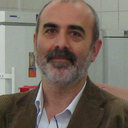TiO2-Nanowired Delivery of DL-3-n-butylphthalide (DL-NBP) Attenuates Blood-Brain Barrier Disruption, Brain Edema Formation, and Neuronal Damages Following Concussive Head Injury.
Keywords
Abstract
DL-3-n-butylphthalide (DL-NBP) is one of the constituents of Chinese celery extract that is used to treat stroke, dementia, and ischemic diseases. However, its role in traumatic brain injury is less well known. In this investigation, neuroprotective effects of DL-NBP in concussive head injury (CHI) on brain pathology were explored in a rat model. CHI was inflicted in anesthetized rats by dropping a weight of 114.6 g from a height of 20 cm through a guide tube on the exposed right parietal bone inducing an impact of 0.224 N and allowed them to survive 4 to 24 h after the primary insult. DL-NBP was administered (40 or 60 mg/kg, i.p.) 2 and 4 h after injury in 8-h survival group and 8 and 12 h after trauma in 24-h survival group. In addition, TiO2-nanowired delivery of DL-NBP (20 or 40 mg/kg, i.p.) in 8 and 24 h CHI rats was also examined. Untreated CHI showed a progressive increase in blood-brain barrier (BBB) breakdown to Evans blue albumin (EBA) and radioiodine ([131]-I), edema formation, and neuronal injuries. The magnitude and intensity of these pathological changes were most marked in the left hemisphere. Treatment with DL-NBP significantly reduced brain pathology in CHI following 8 to 12 h at 40-mg dose. However, 60-mg dose is needed to thwart brain pathology at 24 h following CHI. On the other hand, TiO2-DL-NBP was effective in reducing brain damage up to 8 or 12 h using a 20-mg dose and only 40-mg dose was needed for neuroprotection in CHI at 24 h. These observations are the first to suggest that (i) DL-NBP is quite effective in reducing brain pathology and (ii) nanodelivery of DL-NBP has far more superior effects in CHI, not reported earlier.



